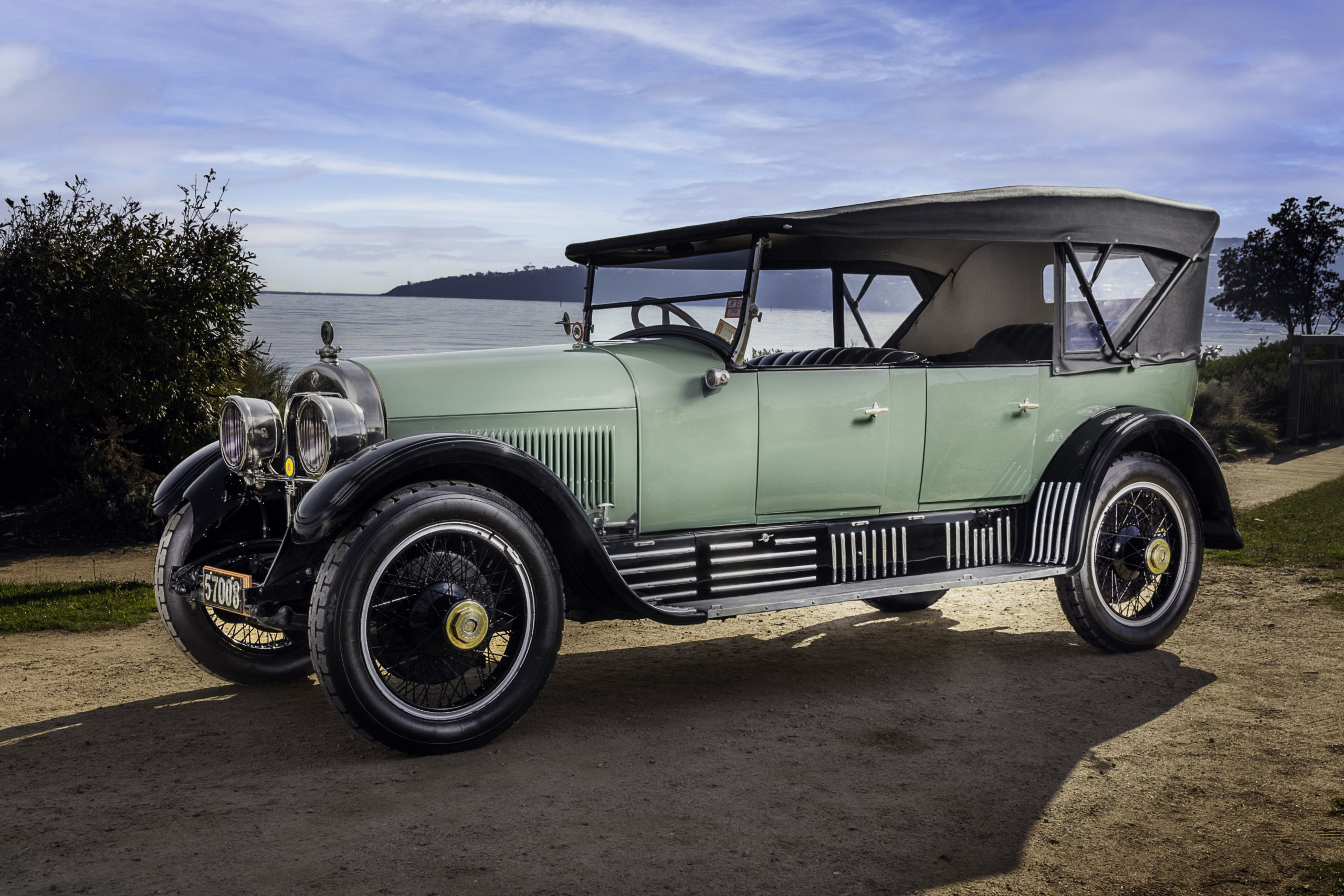It’s been almost 100 years since Craig Emmerson’s Cadillac Type V-63 Tourer arrived in Australia.
It’s been almost 100 years since Craig Emmerson’s Cadillac Type V-63 Tourer arrived in Australia. In this issue of EVOLVE MAGAZINE, we discover the history behind this very special car; a car that survived a perilous ocean crossing, life on a sheep station, a hole in its engine block, and even a decade sitting abandoned beneath a gumtree.
Importing a luxury car from the other side of the world seems commonplace today. We visit a dealership, order a vehicle of our choosing, and wait a few weeks for it to arrive. But in the early 1920s the process was a little more convoluted.
Surviving a journey from the Motor City of Detroit to a sheep station in Victorian’s western district was a feat in itself. The specially ordered Cadillac V-63 Tourer was craned on and off multiple trucks, trains and steamships ahead of its perilous ocean crossing, then craned once more on to the dock at Melbourne’s Station Pier.
After an inspection from the local importer, the brand-new Cadillac was then driven 370km to its patient new owner – pastoralist Henry Gladigau – in the township of Nhill. End to end, the process took a little longer than six months.
Gladigau’s Cadillac was one of four imported to Victoria in April 1924, and cost ten times more than a standard Ford Model T. The current co-owner of the V-63 Tourer, Craig Emmerson, still proudly holds the car’s original owner’s certificate which shows the model was not registered until 1931. Emmerson says the vehicle was driven unregistered for its first seven years, the original owner eventually trading the car back to its importer in 1938.

Registration records show that the V-63 Tourer then passed through as many as five sets of hands over the next nine years and managed to survive both the Great Depression and World War II (scrap metal was a prized commodity in these times). It then found its way to a farm in Moe in the Gippsland region of Victoria and was driven for another decade before being ‘retired’ under a tree.
The car languished untouched until 1958 when it was purchased by Drouin local, Henry Formby. Formby used the V-63 Tourer as his everyday car for the next 30 years (!). It survived a hole in the block and a fall from a tray truck before being retired once again in the back of a shed upon Formby’s passing, and it was here the once-prized automobile would wait out its next 10 years.
Reduced to a whimpering mess
In 1998, Formby’s grandsons (including current co-owner Craig Emmerson) took an interest in the Cadillac and set about restoring it. By their own admission, the job at times had them reduced to a ‘whimpering mess’. The vehicle’s entire wooden body frame was duplicated from its original patterns and period-correct paint applied to closely mimic DuPont’s famous Duco brand of nitrocellulose lacquer.
The original mudguards and valence panels were painstakingly restored and their ‘countless’ aluminium strips polished and renewed. Emmerson had plating restored and new leather gaiters produced, and even used the carcass of an original six-volt battery to house modern internals for that of-the-era look.
Emmerson said that only six V-63s were fitted with 23-inch wire wheels, and that all six were shipped to Australia. The rare option made the restoration tricky, but both Emmerson brothers were insistent that the car look as close to its build sheet as possible and persisted with the expensive process.
With the body and frame restored, and the paintwork gleaming, the next step of the restoration of the V-63 Tourer was its opulent interior. Six hides of leather were used to upholster the Cadillac’s seven seats, the work revealing original calico and seat springs Made for Cadillac and date-stamped December 1923.
A mechanical overhaul, including new brakes and wheel hubs, finalised the restoration, and in 2016 the Cadillac was back on the road… again.
“I think the complexity of restoring the Cadillac took us by surprise,” said current co-owner of the V-63 Tourer, Craig Emmerson.
“This most recent restoration will add a new lease of life and should hopefully see this incredible car continue on for another century.
“Seeing it fully completed fills me with pride, and every time I sit behind that walnut steering wheel I’m consumed with nostalgia. I think about the men who designed the car, and those who worked on the assembly line. I think of old Mr. Gladigau and how grand that car must have been in a place like Nhill.
“But mostly I think of my grandfather and the adventures he had in this car – if only it could talk,” Emmerson reminisced.
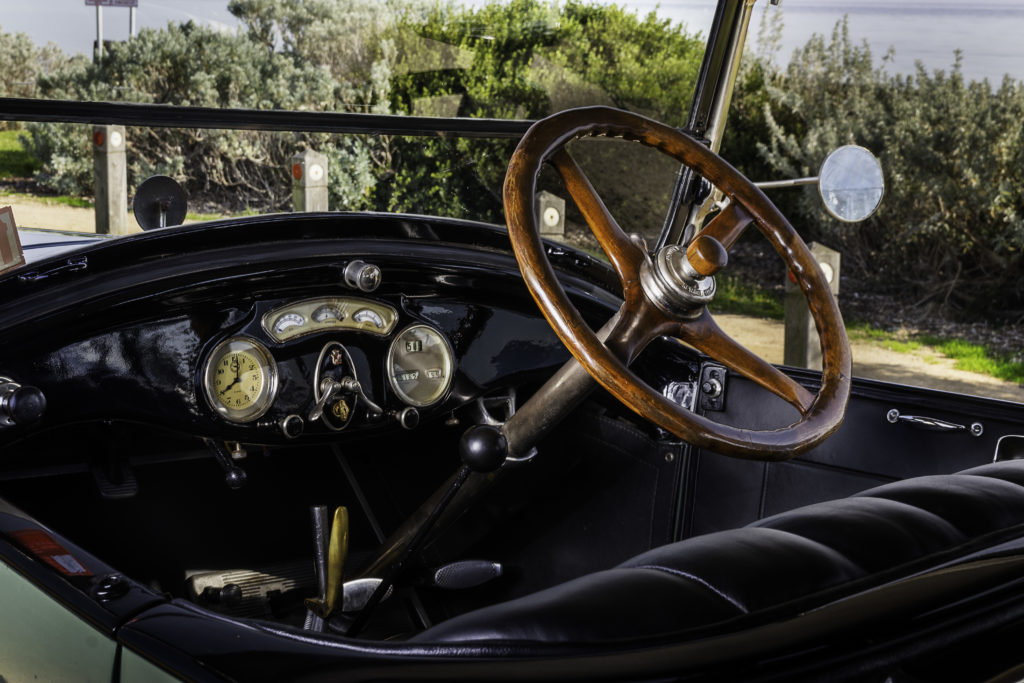
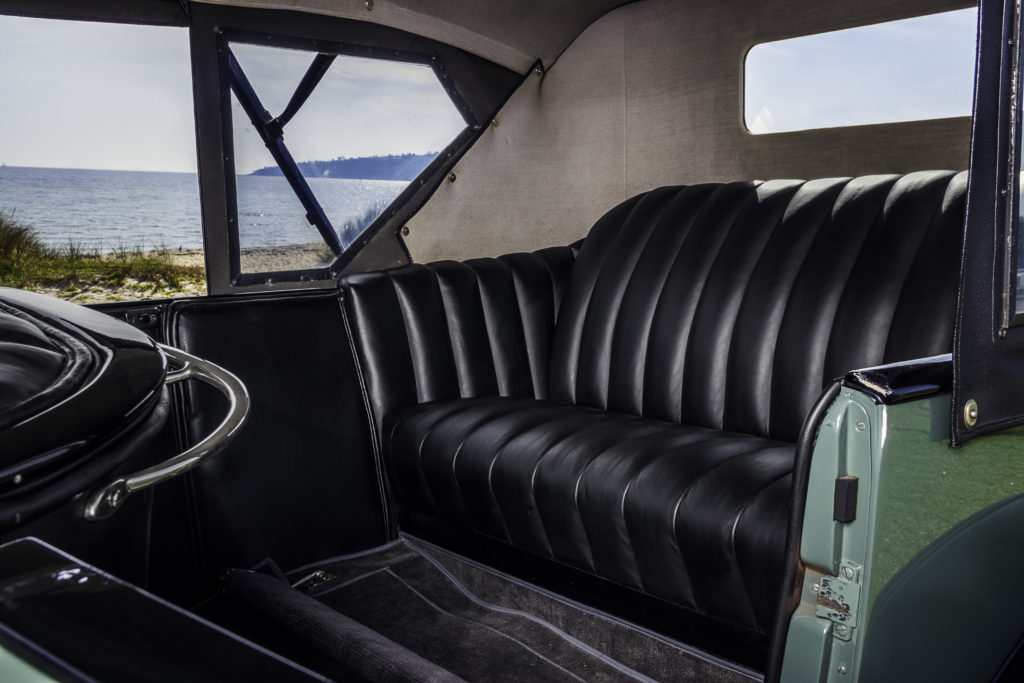
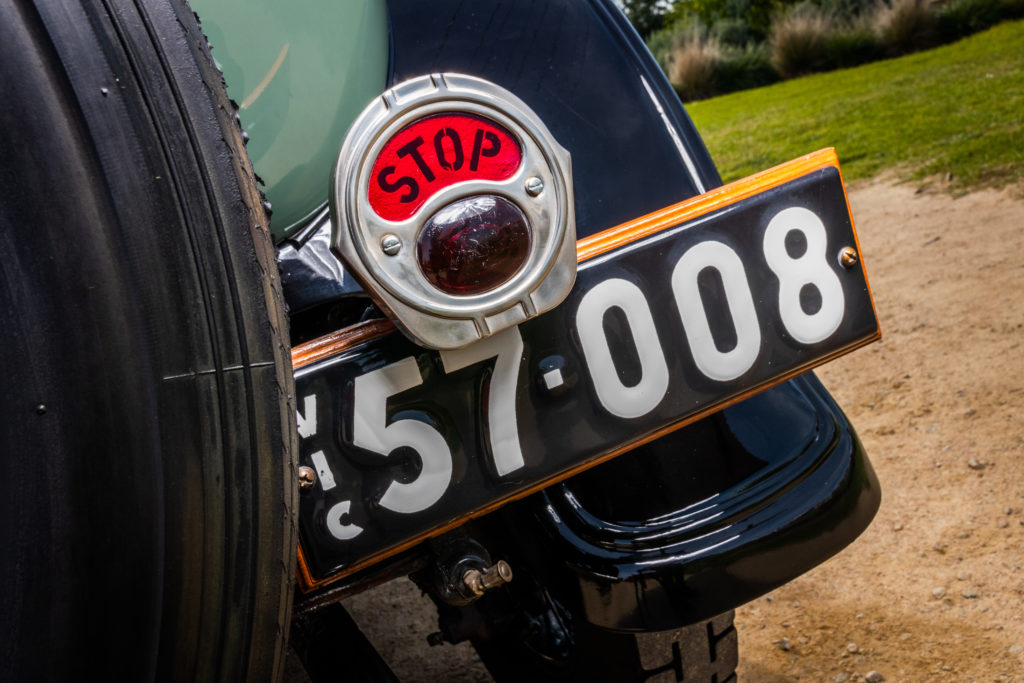
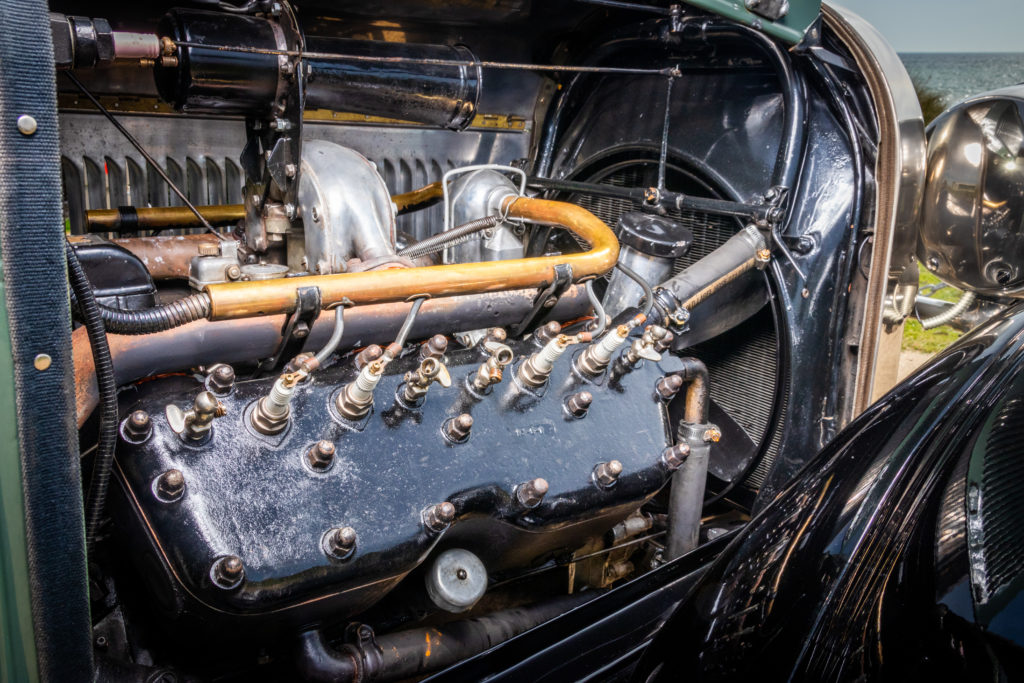
About the Cadillac Type V-63
Designed in 1922 and introduced in September 1923 by Cadillac as a 1924 model, the Type V-63 range replaced the previous Type 61, carrying over only the engine of the preceding car. That engine, an L-head V8 displacing 5.1, 5.6 and 5.8 litres in its various guises (and making approximately 59kW @ 3,000rpm), was mated to a three-speed all synchromesh gearbox and drove the rear wheels via a choice of three final drive ratios.
Cadillac offered 14 different bodies (including ambulances and hearses) over the lifespan the Type V-63, the closed-body design helping the manufacturer appeal to a female audience. Seven-seat iterations of the Type V-63 weighed over 1,900kg and front brakes were now an available option. Uniquely, Cadillac offered 24 colours, 10 upholstery patterns and three wheel types on the Type V-63 range.
Before the Type V-63 was discontinued, it introduced equipment that included electric windscreen wipers, Security-Plate safety glass, two-tone paint schemes, heater, rear folding trunk, and the famous Goddess hood ornament.
